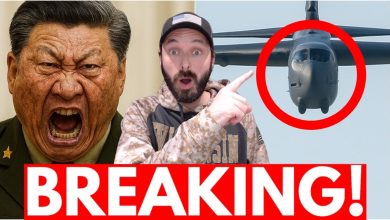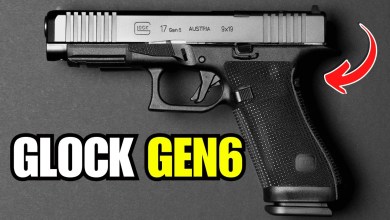Hong Kong to Guangdong: Inside the ‘World’s Factory’ for Outdoor Gear

It’s a misty morning in Hong Kong. I’m traveling east in the backseat of an Uber, glass towers and green peaks forming an ethereal backdrop for the morning commute.
I came to the region for a trade show. Global Sources, a business-to-business event, connects brands with manufacturers in verticals from baby products to outdoor gear. Its focus is upstarts and manufacturers, with camp chairs, hammocks, and pickleball racquets lining aisles that represent “made in China” in the flesh.
With Trump and tariffs dominating the news, my trip, which had been arranged months ago, would serve as a first-person peek at a possible looming trade war.
Though a microcosm, the Hong Kong visit was poised to capture some of the mood brands and suppliers now face as a rift expands between Asia and the West.
First Stop: Hong Kong to China
Before Global Sources and the fluorescent-lit convention hall, I wanted to get boots on the ground. I’d flown in 2 days early with an invite to Dongguan, a city in China’s industrialized Guangdong Province.
An hour into the country, startup brand Mount to Coast has an R&D facility, manufacturing partners, and a supplier for a foam that makes its footwear unique. In one day, I could glimpse it all. Or at least get the vibe.
The ferry from Hong Kong departed at 9 a.m. We motored past fishing boats and docks where containers piled deep. This is a world capital of trade and among the planet’s busiest ports.
An hour later, I am in the mainland. Mount to Coast employee Kaai Lin waited for me in an arrival hall. His bright white shoes, a signature of the brand, gave him away among the crowd.
“Welcome to China,” he said. “Our car is upstairs.”
From Big to Small, A Base of Operations
An endless metropolis unfurls as we drive. We’re moving north through Guangdong, a province where companies build bases to access the supply chain in a sprawling factory-scape.
It’s an outdoor gear hot spot, too. Here you find suppliers for tents, shoes, water bottles, apparel, and packs. Watch brand COROS manufactures in the province. DJI, the world’s leading drone manufacturer, is another giant among Guangdong’s sprawl.
Mount to Coast is a startup. Its founder, Vincent Chen, launched a skincare company, the Yatsen Group, before a pivot to the running space. In Guangdong, the nascent brand would find turnkey partners — many the same as with Nike, adidas, Under Armour — for midsoles, foams, upper material, and other components required in the making of a shoe.
Launched just a year ago, Mount to Coast has garnered awards and growing distribution in the West. GearJunkie writer Will Porter gave the brand’s R1 model a “best overall running shoe” accolade, citing that it’s “not often that a brand comes out of nowhere and wows us, but that’s precisely what Mount to Coast has done.”
In Dongguan, our car pulls up to an outdoor mall. We shuffle out and find Yeti Zhang, the company’s head of product, and we usher into a restaurant for lunch.
Zhang came from Nike and Brooks Running, where, as a chemical engineer and product manager, he spent 2 decades immersed in the materials and componentry of the footwear world. His ties to the Guangdong supply chain run deep, with friends and former colleagues as managers and factory heads.
Guangdong: The World’s Factory
Exports fuel the region. Guangdong, sometimes called the “world’s factory,” is a powerhouse in China’s economy, from shoes to toys, cars, tech products, textiles, furniture, and household goods.
For Mount to Coast, an office here offers the ability to punch above its weight. One example is its running research lab, found on the sixth floor of a building occupied by materials company HaiLex Technology. An indoor oval with in-floor sensors provides a test track for runners. Motion-capturing cameras flank the ceiling above.
HaiLex Technology has offices and labs on multiple floors in the facility. We took a fast tour through labs with raw foam and machines built to analyze material with a molecular scan.
“This costs as much as a BMW,” Zhang said, motioning at a microwave-sized box with dials on its side.
A secret sauce for Mount to Coast is its foam. Zhang explained a process of putting foam blocks into a compression chamber that is “many times greater than the depths of the ocean.”
He showed me the result in the guise of a miniaturized midsole. The baby-size Mount to Coast form would later be reconstituted and infused with nitrogen, expanding into a size 9 men’s shoe with new properties refined for the demands of a rocky trail run.
The process, courtesy of the onsite partnership with HaiLex, is one of multiple proprietary methods Mount to Coast can deploy due to not only its ingenuity but also the access the company has to innovation in the “world’s factory” of Guangdong.
Tariffs & Trade Tensions
All the innovation in the world gets you nowhere if you can’t reach customers. Mount to Coast is based in China and Hong Kong, but its primary customer base is across the sea. It launched in the U.S. and is engaging in an aggressive project to expand its American base.
Zhang was flying to Atlanta the week after my visit. I asked him how impending tariffs from the U.S. are affecting Mount to Coast. Tariff increases have already raised costs, he said. Just like many companies in the region, his team is anticipating a substantial impact.
However, Zhang said, they are “pushing forward” and hoping that with negotiations between the two countries, “we can avoid changes that might interrupt our momentum as a young brand.”
Earlier in the day, Zhang had mentioned Vietnam. They had looked at moving some operations to the country because of tariffs. He said if U.S.-China trade issues remain tense, they may consider relocating part of the production to Vietnam, where tariffs might not be so steep.
It was a quick trip to Dongguan. A car drove me back south past glass towers and industrial sprawl. I got to the ferry dock as the sun went down over the South China Sea.
In Hong Kong, a trade show was coming together inside a huge hall. Whereas Mount to Coast presented an intimate case, the show, Global Sources could offer a macro view.
Trade Show Time
Held at the sprawling AsiaWorld-Expo center on the outskirts of Hong Kong, Global Sources is booked multiple weekends each spring and fall. I came for the final phase in April, where a section of hall space was dedicated to sports and outdoor gear.
It was Sunday morning, and I grabbed a press badge to walk inside. Booths splayed wall to wall, suppliers offering tents, packs, jackets, sport glasses, water bottles, air mattresses, and suitcases that convert to scooters for airport concourse commutes.
Global Sources holds a broad premise for what qualifies as outdoor gear, with fitness, team sports, and yard games in the mix. Next to a tent company was a tennis brand. Pickleball racquets hung for sale in booth after booth.
The show boasts 700 exhibitors and 10,000 attendees. The outdoor and sporting goods section is a subsection, with a few dozen exhibitors.
Many of the products were iterations of gear already on the market — camp pads, jackets, sunglasses, and hats — but some innovation was on display.
One company revealed an eco-friendly (non-plastic) cup built for beer sales at sporting events. It is made of aluminum and is ultra-thin with 0.18mm walls, crushable and recyclable after use. Another booth revealed an inflatable insert that turns the back of an SUV into a giant bed.
You won’t find the likes of YETI Coolers or Cotopaxi on the premises. Global Sources has the feel of Alibaba meets the Outdoor Retailer show with a scrappy, upstart vibe and brands like Zhejiang Tuying Outdoor Products and Qingdao Kelun International.
This is a true B2B environment. Factory heads and their salesforces are looking to close deals, sign on the line, with no swag or tchotchkes in sight.
Exports and ‘Interesting Things’
Trade wars and tariffs were in the air. But despite impending friction, a tone of optimism and hustle prevailed.
The products — from baby clothes to outdoor gear — come from factories in Guangdong and far beyond. Buyers roam the aisles in search of manufacturing partners poised to bring an export vision to life.
I walked the show for a few hours to gauge the mood. One attendee approached me, asking if I was American. She offered that “Trump is a big man, and he is doing interesting things … very interesting,” attempting to be vague and polite.
The show is dominated by Chinese and Hong Kong attendees. A rare U.S.-based buyer I found, Alex Stoeffl, noted he was “poking around for products” but would likely not consider exporting in the current climate.
Stoeffl has worked for outdoor retailers and in-house at brands, including Eddyline Kayaks near his home in Bentonville, Ark. He spent 2 years at Razor Group, an Amazon-focused company with a portfolio of consumer brands.
“For me, it’s more a scouting mission this year,” Stoeffl said. “I am getting to know people and suppliers, and then I will come back.”
Global Sources offers resources for exhibitors parsing the complexities of tariffs and trade. The show’s website, in a section called “China Tariff Rates: A Comprehensive Guide for Importers and Exporters,” provides updates on U.S. trade.
Ongoing tensions with the U.S., the guide cites, “add a layer of complexity to this landscape, with retaliatory tariffs and other trade measures creating potential disruptions for global supply chains.”
The volatile nature of the current environment, Global Sources notes, creates a need for businesses “to remain agile in their approach to international trade.”
Indeed, as this article went to press a month after my visit, tariffs are still wildly in flux. Just yesterday, a federal judge ruled Trump’s tariffs unlawful, so it’s yet to be seen how they may play out.
Despite geopolitical headwinds, the energy at Global Sources ran high. In the cavernous halls, deals were struck and prototypes unveiled with pride. The future of outdoor gear was taking shape, one SKU, one supplier, and one handshake at a time.
Read the full article here








